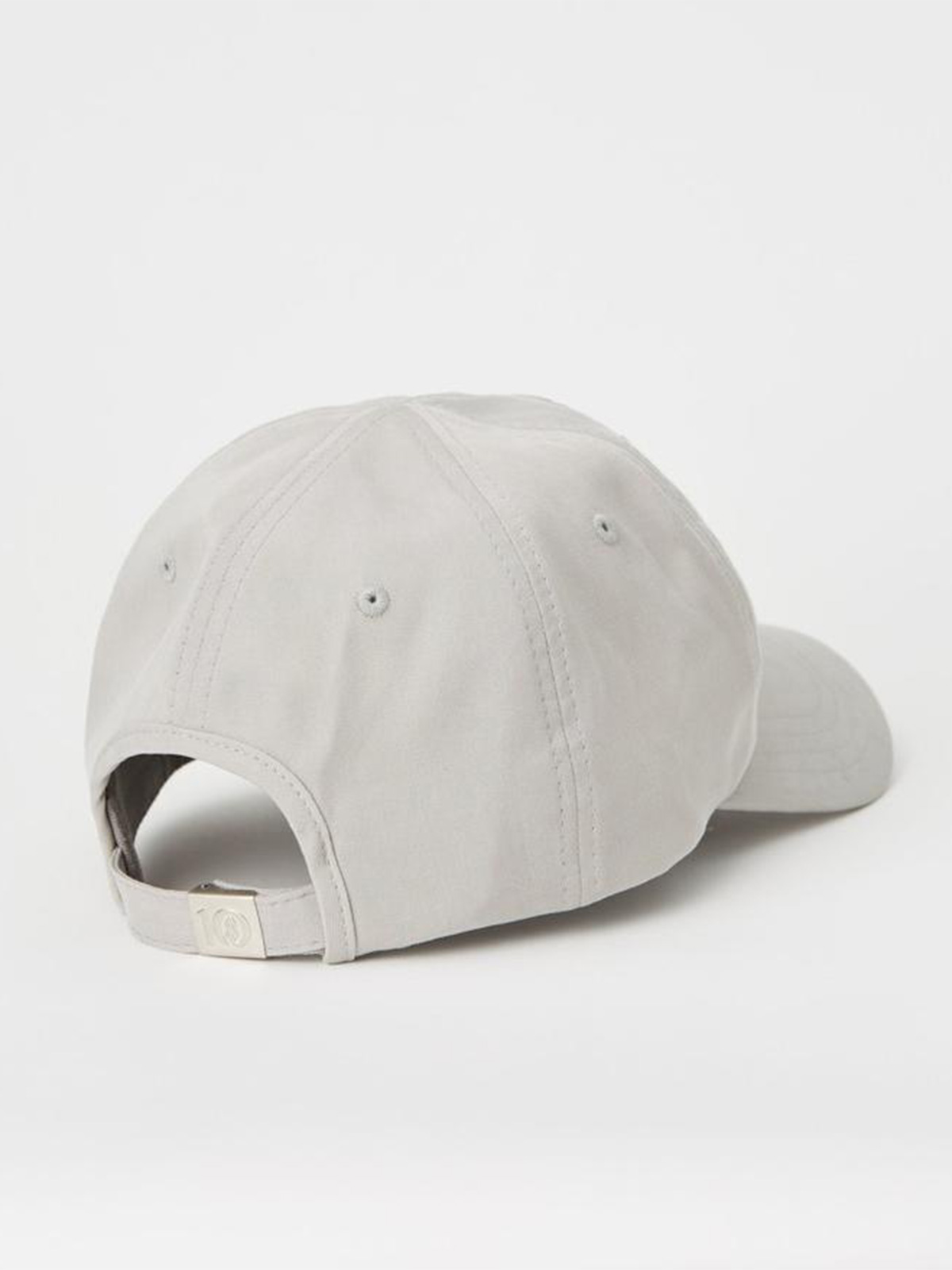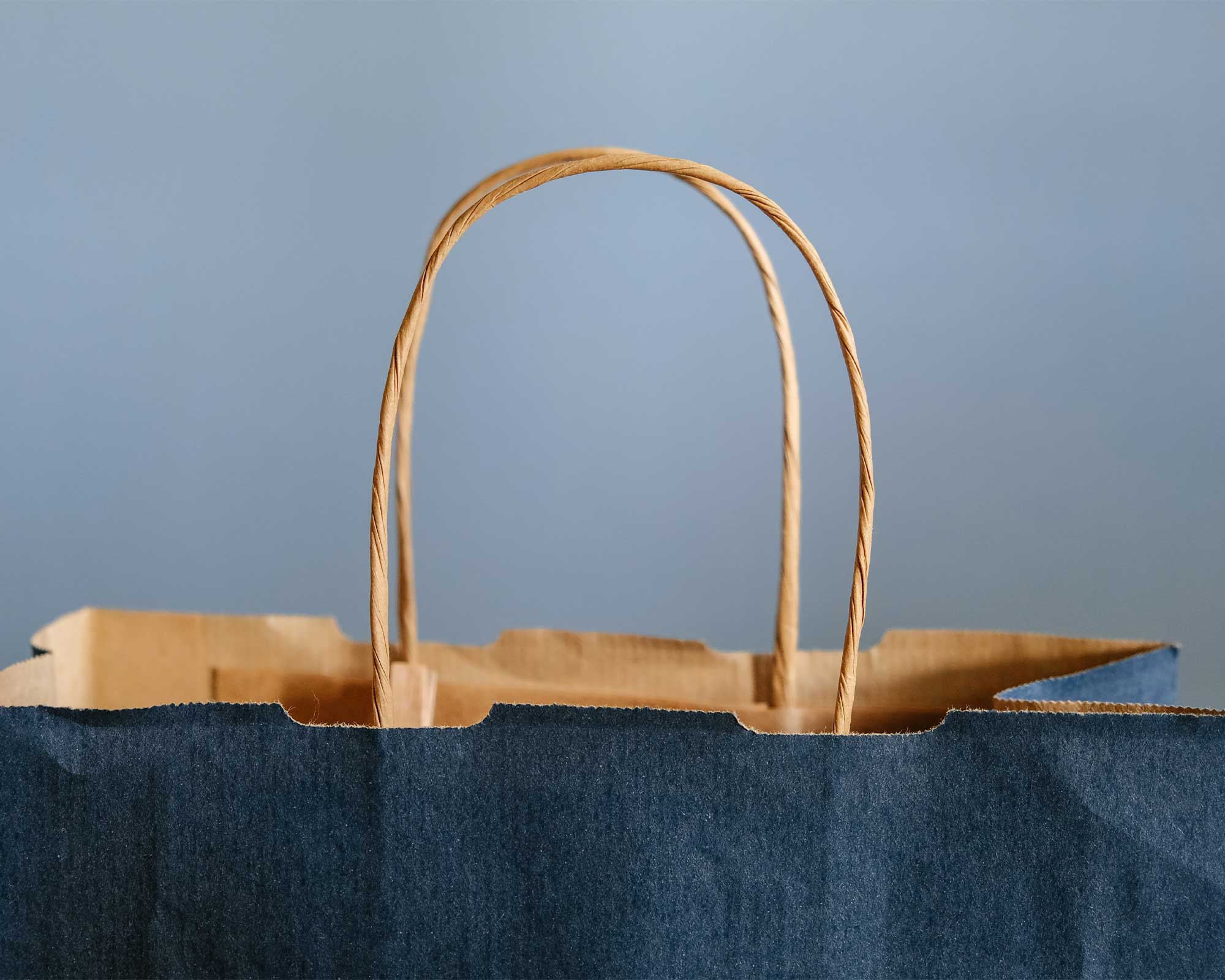Shopping more sustainably isn’t as simple as swapping out the brands you support in favour of more ethical ones. Madeleine of Our Simple Gestures talks us through her top tips for curbing a sustainable shopping habit.
Sustainable and ethical fashion isn’t just about switching our purchases from one way of consuming to another “better” alternative. On the contrary, the most powerful way to reduce our environmental and fashion footprint, and to get to the root cause of why we need to shift to more sustainable and ethical practices in the first place, is to simply start buying less.
Whether it be our wardrobes or our homes overall, to curb our sustainable shopping habits, there is no doubt we need to change HOW we shop (more ethically and sustainably). But equally important is WHEN we consume (how frequently we shop). And it all starts with understanding how to move from a mindless shopper and avid spender to a more conscious consumer.
The importance of buying less
Purchasing more sustainable alternatives isn’t a free pass to buy as often and as much as we want.
Purchasing more sustainable alternatives isn’t a free pass to buy as often and as much as we want. In recent years, we have increasingly seen more acknowledgment and emphasis on sustainable practices and transparency in the fashion industry and beyond, with brands held more accountable for their activities and the impact their actions have on the environment. This shift came about as the stark reality of our consumerism came to light—its impact on the environment, natural ecosystems, and overall, the health of the planet. The rate at which we purchase, spend, and consume is officially unsustainable in the short and long term. Something—namely our systems—need to change.
From high consumer demand comes a higher production of food, personal hygiene products, clothing, health supplies, and more. But the problem is, this high volume means products are made cheaply in bulk rather than through the lens of quality and ongoing renewal and reuse. An example of a systems change we are seeing which addresses this problem at the cause is the circular economy. In fashion, circularity can be defined as a system where our clothing and personal belongings are produced through a more considered model: where the production of an item and the end of its life are equally important. This type of thinking is crucial, not just from companies, brands, and governments but also from the consumer perspective.
Curbing our sustainable shopping habit, therefore, requires something a little bit different, with a more circular system in mind: Taking control of our money and our purchases, spending in moderation, and more thorough consideration of our purchases from the outset. Just because it might be a sustainable product doesn’t make it okay to overconsume. Let’s take a closer look at the key ways we can be more conscious consumers.
6 ways to form healthier shopping habits

Understand the temptation
As part of forming healthier shopping habits, it is essential to understand the deeper meaning or reason behind WHY we shop so much in the first place. I mean, we weren’t born consumers or shoppers. The “temptation” to spend our hard-earned money was thrust upon us when we first saw a TV ad, billboard, or social media ad, or when our friends or family did, and by default, expected us to have items of a similar calibre. The reality is, people often shop so much because society expects us to stay up to date and have all the latest products, which means the (not so old) previous version goes where? Landfill? Maybe a second hand store? The turnover of belongings is so fast we barely have time to appreciate what we already own. If you really look at what you have—the outfit you’re wearing at this very moment, for example—it’s amazing to think about what has gone into the design, fabrication, and production for it to exist at all.
We often see shopping as a balm for boredom or a “soothing” activity for the stressed mind in this day and age—a kind of emotional comfort. But this fleeting comfort is costing the planet. Ecosystems, animals, and humans can’t afford this approach anymore, especially when there are healthier and more fulfilling ways to spend our time and money.
Know what you own
A key factor to having more control over our spending habits is knowing what we already own, making us more prepared when the temptation arises to purchase something new. This could be through the regular organisation of your home and intermittent cleanouts throughout the year. Remember, cleanouts don’t necessarily mean taking everything to a second hand store, especially anything soiled or damaged. Consider recycling or upcycling your unwanted clothes responsibly as an even more sustainable alternative.
I often check my wardrobe closely before buying something to ensure it’s not too similar to a piece I already own. It is also very satisfying knowing precisely what you have and makes pairing clothing items more effortless. Capsule wardrobes for the different seasons are a great option if you own a lot of clothing, so you can see and navigate your clothing items effectively.
Minimise your spending windows
Do you ever find yourself scrolling through your phone or device, and all of a sudden, the “confirmation of purchase” screen pops up, and you’ve bought something without consciously thinking about it? You then backtrack and find the source of the purchase was a paid ad on an app you’ve been using 3+ hours a day. Just like that, they’ve got you again. This phenomenon is common for many people who use social media and other online platforms, but it doesn’t have to be the case.
I have found that putting limits on my apps—which almost all smartphones facilitate now—and utilising functions like the blissful “do not disturb” mode can give you more control, awareness, and discipline around when you use your phone and for what purpose. This tip can involve scheduling time for certain activities—including browsing online, if that interests you—but also for things like reading the news.
Remember, these brands, websites, ads, and search engines are engineered to grab your attention and direct you to where they want you to go. But you can and will resist. The result will be a better use of your time, more considered purchases, and likely fewer purchases overall.
Leave it in the cart
If you are accustomed to buying spontaneously and often, leaving an item to hover in the online cart should be your go-to. To minimise your spending and clothing consumption, set yourself a rule to leave the item in the cart for at least seven days. This way, you can spend adequate time mulling over whether you actually need the item and what benefit it would bring to your life if any. If after this period you still believe the item would benefit you and is not like anything else you own, then you can go ahead with the purchase, knowing you have seriously considered it before buying.
This tip has worked wonders for me and my savings account, and honestly, it still surprises me how the desire to purchase an item often dissolves.
Set yourself up to succeed
To establish healthier shopping habits in the long run, we need to set ourselves up to succeed. This step can look like creating shopping rules to follow. Some examples:
- Curate a list of items you actually need and limit yourself to only buying things on the list.
- Limit yourself to one item of clothing per month/season/year or as the need arises.
- Challenge yourself (and some loved ones) to go a whole year buying nothing new at all.
I recently went a whole year without buying any new garments, and it was a game-changer. It has changed my habits forever, and I have since barely bought any new clothes unless something was irreparable. It is safe to say that a lot more thought goes into purchasing anything now after a year of buying nothing.
Seek out other fulfilling activities
A big part of curbing our shopping habit—sustainable or otherwise—is avoiding temptation in the first place. A straightforward way to achieve this is to spend less time on our devices, period. As we’ve seen a shift and emphasis to everything online since early 2020, we need to have boundaries in place to protect our precious time and ensure we don’t fall into traps of mindless spending and consuming.
A fundamental way I manage this is not to have a browser on my phone. It might sound wild and out of the question for you, but try it on. Just five days without a browser. If you need to look something up, pop a note on your phone and do it on your computer when you get home. That way, you are much more aware of the time you spend on the computer and what you actually do whilst there.
This change also presents an excellent opportunity to re-engage with your community, join or start social groups, head to local produce or second hand markets, try a new form of exercise, or take up a new hobby. Perhaps you’d been meaning to try out the ukulele or try your hand at some knitting. During these peaks of sales and consumerism traps is the perfect time to do so.
Author bio: Madeleine is an experienced content writer specialising in personal sustainability, environmental awareness, and minimal consumption. She loves using her writing and research to communicate these key solutions to environmental issues clearly, and endeavours to help people do more in their everyday lives to minimise their footprint on the planet. To do this, Madeleine manages the online platform Our Simple Gestures, and in her spare time, she loves being outdoors and enjoying life. Also find her on LinkedIn and Instagram.



















